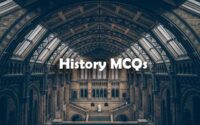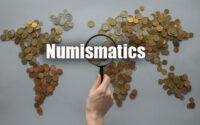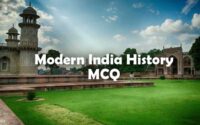Ancient India History Questions and Answers
Last 5 years Ancient India History Questions and Answers Papers provided here. Candidates who are applied for the competitive exam can check and download the ancient history of India topics from here. We have updated ancient history of India topics Previous Papers to present you a scheme on how to plan for the exam.

Download Indian ancient history quiz Last Year Solved Question Papers from the link provided. Therefore, if you are among the one who is searching for the MCQs Indian ancient history quiz Old Papers, then you can check here.
Hence, go through the following sections and download the ancient India quiz Model Question Papers Pdf. Interested aspirants can also check the ancient India quiz MCQ Test Pattern.
Questions and Answers on Ancient India History
1. The earliest city discovered in India was
(A) Harappa
(B) Punjab
(C) Mohenjo Daro
(D) Sindh
2. The famous rock-cut temple of Kailasa is at
(A) Ajanta
(B) Badami
(C) Mahabalipuram
(D) Ellora
3. Epigraphy means
(A) The study of coins
(B) The study of inscriptions
(C) The study of epics
(D) The study of geography
4. Which among the following has not been found in the excavation of Harappan sites?
(A) Drains and well
(B) Fort
(C) Reservoirs
(D) Temple with Shikhar
5. Which among the following ‘MATH’ is related with Buddhism?
(A) Dakhma
(B) Chaitya
(C) Khangah
(D) Angeri
6. Where has the world’s largest monolithic statue of Buddha been installed?
(A) Bamiyan
(B) Hyderabad
(C) Kandy
(D) Lhasa
7. The Harappan Civilisation was discovered in the year:
(A) 1935
(B) 1942
(C) 1901
(D) 1922
8. The title ‘Indian Napolean’ has been attached to
(A) Chandra Gupta Maurya
(B) Samudragupta
(C) Chandragupta-I
(D) Harshavardhana
9. The ‘Ajivikas’ were a
(A) sect contemporary to the Buddha
(B) breakaway branch of the Buddhists
(C) sect founded by Charvaka
(D) sect founded by Shankaracharya
10. The organic relationship between the ancient culture of the indus Valley and Hinduism of today is proved by the worship of
(A) Pashupati, Indra and the Mother Goddess
(B) Stones, trees and animals
(C) Vishnu and Lakshmi
(D) Siva and Sakti
11. How was Burma (now Myanmar) known to ancient Indians?
(A) Malayamandalam
(B) Yavadwipa
(C) Suvarnabhumi
(D) Suvarnadwipa
12. With whom is ‘Junagarh Rock Inscription’ associated?
(A) Rudradaman
(B) Bimbisara
(C) Chandragupta II
(D) Gautamiputra Satakarni
13. Nalanda University was a great centre of learning, especially in
(A) Buddhism
(B) Jainism
(C) Vaishnavism
(D) Tantra
14. The Rathas of Mahabalipuram was built during the reign of the
(A) Palas
(B) Cholas
(C) Rashtrakutas
(D) Pallavas
15. Who were the first kings to issue gold coins in India?
(A) Mauryas
(B) Indo-Greeks
(C) Guptas
(D) Kushans
16. Where is Brihadeshwar Temple situated?
(A) Kanchi
(B) Madurai
(C) Shri Shailan
(D) Tanjore
17. In Tamil literature the glorious books ‘Shilppadikaram and Manimekhalai’ are related to
(A) Jainism
(B) Buddhism
(C) Hindusim
(D) Christianity
18. Who is hailed as the “God of Medicine” by the practitioners of Ayurveda?
(A) Susruta
(B) Chyavana
(C) Dhanwantari
(D) Charaka
19. Which was the only Indus site with an artificial brick dockyard?
(A) Lothal
(B) Kalibangan
(C) Harappa
(D) Mohenjo Daro
20. Which dynasty succeeded the Chalukyas in the Western India?
(A) Cholas
(B) Kakatiyas
(C) Pallavas
(D) Rashtrakutas
| Ancient History | Modern History |
| Medieval History | Indian History |
21. Upto where did Chandragupta Maurya’s empire extend in the north-west?
(A) Ravi river
(B) Indus river
(C) Satluj river
(D) Hindukush range
22. Prince Ellara conquered Sri Lanka in the second century BC. With which of the following dynasties of Dravida ruler was he associated?
(A) Chera
(B) Chola
(C) Pandya
(D) Pallava
23. Harshavardhana organised his religious assembly at
(A) Mathura
(B) Prayag
(C) Varanasi
(D) Tamralipt
24. Which of the following domesticated animals was absent in the terracottas of the Indus civilisation?
(A) Buffalo
(B) Sheep
(C) Cow
(D) Pig
25. Which among the following is the sacred book of the Buddhists?
(A) Upanishad
(B) Vedas
(C) Tripitaka
(D) Jatakas
26. The greatest development in the Kushana period was in the field of
(A) Religion
(B) Art
(C) Literature
(D) architecture
27. Who established Mahabalipuram?
(A) Pallava
(B) Pandya
(C) Chola
(D) Chalukya
28. The Saka era commencing from A.D. 78, was founded by
(A) Kanishka
(B) Asoka
(C) Chandragupta
(D) Vikramaditya
29. Ganhadra school of art came into existence in
(A) Hinayana sect
(B) Mahayana sect
(C) Vaishnava sect
(D) Shaiva sect
30. Out of the following remains excavated in Indus Valley, which one indicates the commercial and economic development?
(A) The Pottery
(B) Seals
(C) The boats
(D) The houses
31. Who, according to the Buddhists, is believed to be the next incarnation of Gautam Buddha?
(A) Atreya
(B) Maitreya
(C) Nagarjuna
(D) Kalki
32. Who among the following were contemporaries of Kanishka?
(A) Kamban, Banabhatta, Asvagosha
(B) Nagarjuna, Asvagosha, Vasumitra
(C) Asvagosha, Kalidasa, Banabhatta
(D) Kalidasa, Kamban, Va-sumitra
33. Which rulers built the Ellora temples?
(A) Chalukya
(B) Sunga
(C) Rashtrakuta
(D) Pallava
34. Who amongst the following also had the name ‘Devanama Piyadassi’?
(A) Mauryan King Ashoka
(B) Mauryan King Chandra-gupta Maurya
(C) Gautam Buddha
(D) Bhagwan Mahavira
35. The subject-matter of Ajanta Paintings pertains to
(A) Jainism
(B) Buddhism
(C) Vaishnavism
(D) Shaivism
36. Which of the following Craftsmanship was not practised by the Aryans?
(A) Pottery
(B) Jewellery
(C) Carpentry
(D) Blacksmith
37. Mohammed-bin-Qasim conquered Sind in the year
(A) 712 A.D.
(B) 812 A.D.
(C) 912 A.D.
(D) 1012 A.D.
38. The words “Satyameva Jayate” in the State Emblem of India were taken from
(A) Upanishads
(B) Sama Veda
(C) Rig Veda
(D) Ramayana
39. Who was the first known Gupta ruler?
(A) Sri Gupta
(B) Chandragupta I
(C) Ghatotkacha
(D) Kumaragupta I
40. Which was the only Indus city without a citadel?
(A) Kalibangan
(B) Harappa
(C) Mohenjodaro
(D) Chanhudaro
41. Ashoka called the Third Buddhist Council at
(A) Pataliputra
(B) Magadha
(C) Kalinga
(D) Sarnath
42. The tutor of Alexander, the Great was
(A) Darius
(B) Cyrus
(C) Socrates
(D) Aristotle
43. Which of the following literary works belongs to classical Sanskrit literature?
(A) Dhammapada
(B) Vedas
(C) Meghadutam
(D) Dighanikaya
44. Who propounded the ‘Eight-Fold Path’ for the end of misery of mankind?
(A) Mahavir
(B) Gautam Buddha
(C) Adi Shankaracharya
(D) Kabir
45. The number system ‘Zero’ was invented by
(A) Ramanujam
(B) Aryabhatta
(C) Patanjali
(D) An unknown person
46. ‘Charak’ was the famous court physician of
(A) Harsha
(B) Chandra Gupta Maurya
(C) Ashoka
(D) Kanishka
47. Buddhism made an important impact by allowing two sections of society into its fold. They were
(A) Merchants and Priests
(B) Moneylenders and Slaves
(C) Warriors and Traders
(D) Women and Sudras
48. The language used to write source materials in ancient time was
(A) Sanskrit
(B) Pali
(C) Brahmi
(D) Kharosthi
49. India’s trade with the Roman Empire came to an end with the invasion of Rome by the
(A) Arabs
(B) Hungarians
(C) Hunas
(D) Turks
50. Most of the chola temples were dedicated to
(A) Ganesh
(B) Shiva
(C) Durga
(D) Vishnu



